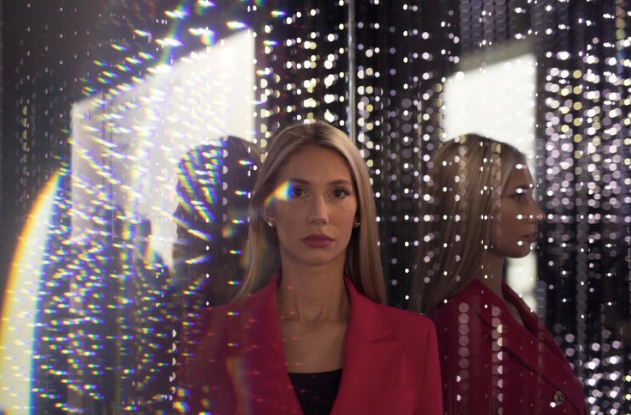Artificial Intelligence (AI) has transformed numerous sectors, from healthcare to entertainment. One of the more controversial applications is its role in creating “deepfakes,” a portmanteau of “deep learning” and “fake.” This technology leverages sophisticated AI algorithms to produce highly realistic yet fake images and videos, often depicting celebrities and public figures in various scenarios. This article explores how AI powers deepfakes, their implications for celebrities, and the ethical dilemmas they pose.
Understanding Deepfakes: The Technology Behind the Illusion
1. The Mechanics of Deepfakes
Deepfakes utilize AI, particularly Generative Adversarial Networks (GANs), to create highly realistic digital fabrications. Here’s a breakdown of how they work:
- Generative Adversarial Networks (GANs): GANs consist of two neural networks, a generator and a discriminator, that work in tandem. The generator creates fake images or videos, while the discriminator evaluates them against real data to determine their authenticity. Through iterative training, the generator improves its ability to produce lifelike fakes.
- Deep Learning Algorithms: These algorithms analyze vast datasets of photos and videos of the targeted individual. They learn to mimic facial expressions, voice, and even body movements to produce a seamless and convincing result.
- Facial Mapping and Replacement: AI analyzes the facial structure and expressions of the target, mapping them onto a different person’s face. Advanced techniques allow for real-time manipulation, enhancing the realism.
2. Applications in the Entertainment Industry
- Movies and TV Shows: AI-driven deepfakes are used in the film industry to recreate younger versions of actors, or even bring deceased actors back to life for new roles.
- Advertisements: Brands use deepfakes to feature celebrities without their physical presence, cutting down on production costs and logistics.
The Impact on Celebrities
1. Privacy Invasion and Unauthorized Use
- Exploitation: Celebrities often find their likenesses used in deepfake pornography or other damaging scenarios without consent. This exploitation raises significant privacy concerns and can harm reputations.
- Unauthorized Endorsements: Deepfakes can be used to make celebrities appear to endorse products or political views they do not actually support, leading to public relations crises and legal battles.
2. Erosion of Trust and Authenticity
- Trust Issues: As deepfakes become more realistic, distinguishing between real and fake content becomes harder, eroding public trust in digital media. Celebrities must often defend against fabricated actions or statements attributed to them.
- Verification Challenges: Media outlets and fans struggle to verify the authenticity of celebrity appearances or statements, complicating public discourse.
3. Legal and Ethical Implications
- Defamation and Libel: Deepfakes can be used to create defamatory content, leading to legal challenges. Celebrities may sue for damages, but laws are still catching up with the technology.
- Ethical Dilemmas: The use of deepfakes for entertainment versus malicious intent blurs ethical boundaries. The entertainment industry grapples with the morality of using AI to manipulate reality for profit.
Combating Deepfakes: The Role of AI in Detection
1. AI-Powered Detection Tools
- Forensic Analysis: AI tools can analyze videos and images for inconsistencies in lighting, shadows, and facial movements that are typical in deepfakes. These tools use machine learning to flag potential fakes.
- Blockchain Verification: Some approaches use blockchain to verify the authenticity of digital content by tracking its origin and ensuring it hasn’t been tampered with.
2. Legislative Measures
- Regulation: Governments are beginning to draft legislation to combat the malicious use of deepfakes. Laws focusing on digital identity theft and unauthorized use of a person’s likeness are becoming more prevalent.
- Platform Policies: Social media platforms are implementing stricter guidelines and technologies to detect and remove deepfakes, aiming to reduce their spread.
The Future of AI and Deepfakes
1. Enhancements in Realism
As AI technology advances, deepfakes are becoming more indistinguishable from real content. This progress raises the stakes for both creators and those seeking to detect and combat them.
2. Ethical AI Development
The development of AI-driven deepfakes highlights the need for ethical Artificial intelligence practices. Responsible AI development includes creating robust detection methods and establishing guidelines to prevent misuse.
3. Public Awareness and Education
Increasing public awareness about the existence and risks of deepfakes is crucial. Educating people on how to critically evaluate digital content can mitigate the impact of malicious deepfakes.
Conclusion
AI’s role in creating deepfakes is a double-edged sword. On one hand, it offers innovative solutions for the entertainment industry and creative endeavors. On the other hand, it poses significant challenges in terms of privacy, trust, and ethical considerations, particularly for celebrities. As deepfake technology continues to evolve, a balanced approach that leverages artificial intelligence for detection and promotes ethical standards will be essential to navigate this complex landscape.
